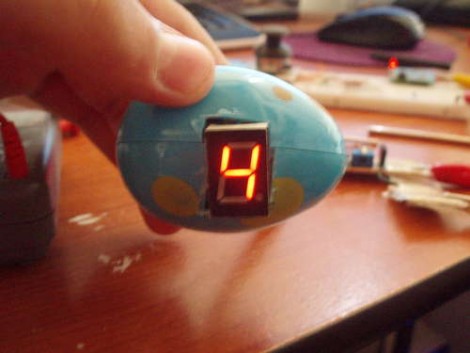
[Iron Jungle] just finished building this gear indicator for his motorcycle. It uses a red 7-segment display to show the rider what gear is currently engaged. This hack is pretty common and makes us wonder why all motorcycles don’t come standard with the feature? But then again, if they did you wouldn’t have a reason to hack them.
The motorcycle does have a gear sensor; apparently it only lacks a way to display this data. The sensor outputs a signal between 0 and 5V which [Iron Jungle] reads using a PICAXE 18M2 microcontroller. Patching into that signal wasn’t hard at all. Once he found the correct wire he simply removed a portion of the insulation and soldered a lead to the conductor. This should stand up to the vibrations encountered in an automotive application like this one. Since the computing power is already there, he also included a DS18B20 to take ambient air temperature readings. Check out the quick demo after the break.
This is not the first time we’ve seen the V-Storm get a custom gear indicator. But if you really want to go all out, perhaps you need to build an interface for your tablet or smart phone. Continue reading “Suzuki V-Strom Current Gear Indicator”












